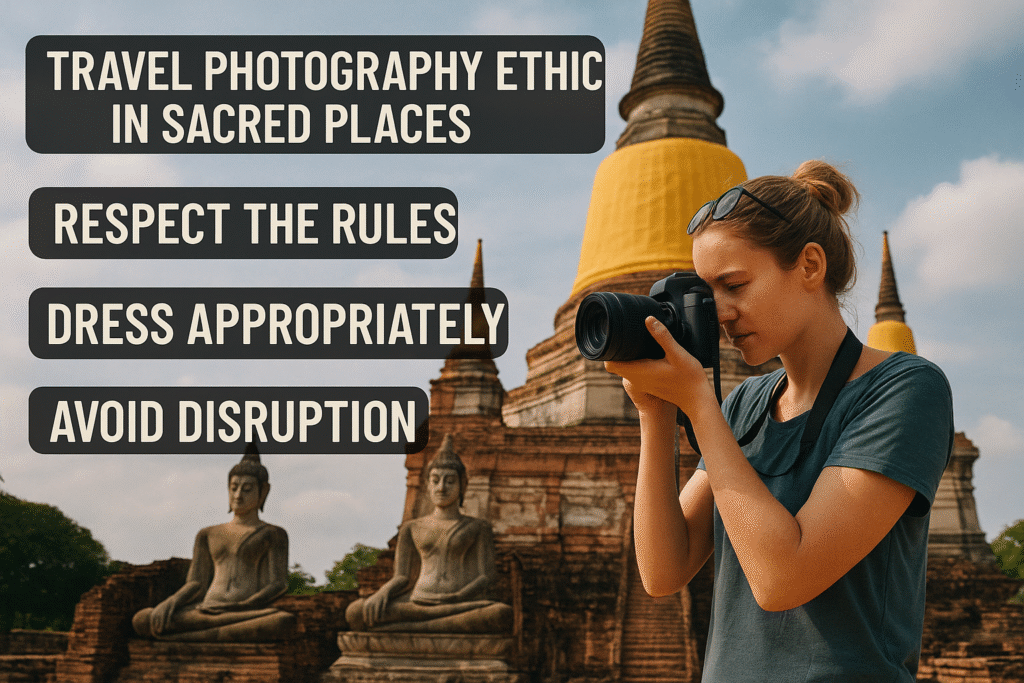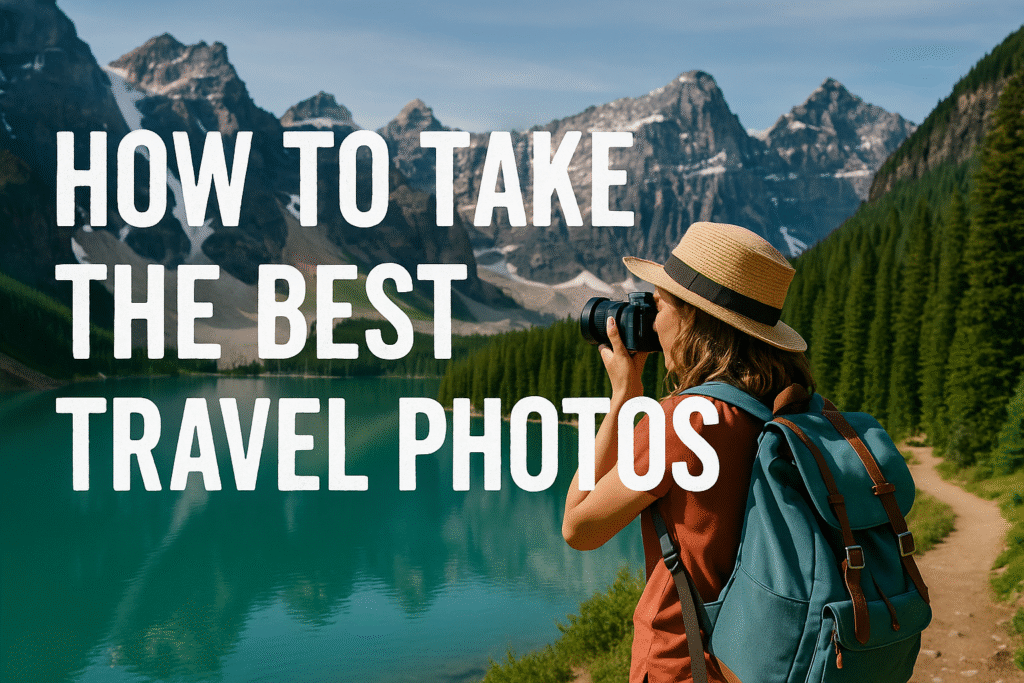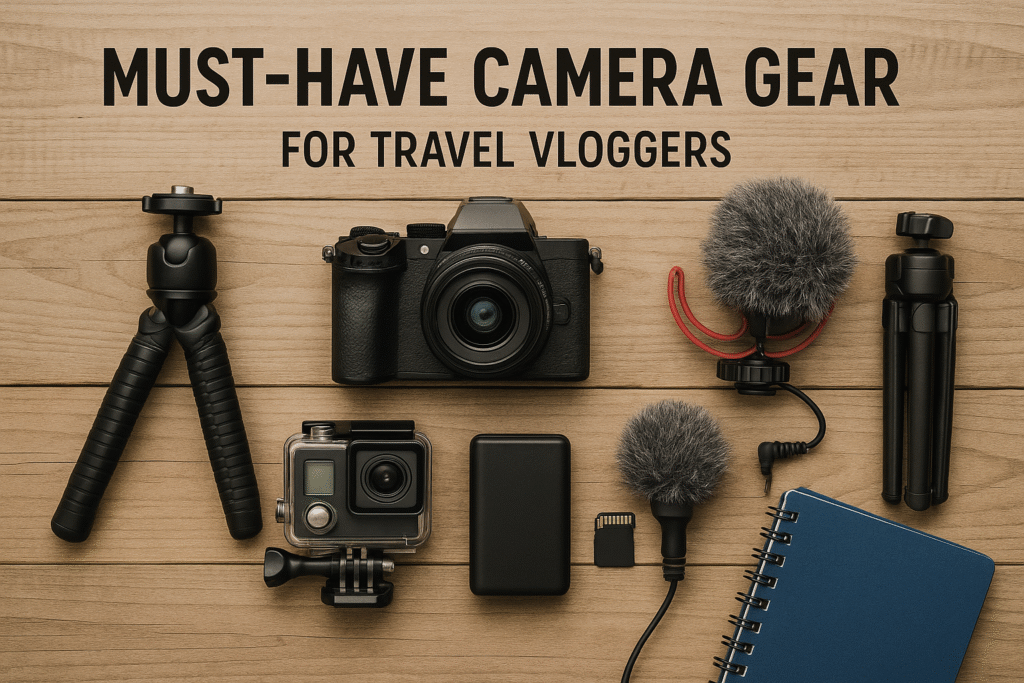🙏 Travel Photography Ethics in Sacred Places – Respect, Culture & the Lens (2025 Guide)
Clicking photos at temples or during rituals? Learn the essential rules of travel photography ethics in sacred places across India—what to avoid, respect, and capture right. By TheIndiaTourism.in.
🧭 Introduction: When Respect Comes Before the Click
From the holy ghats of Varanasi to the serene peace of Mayapur and the divine energy of Gangasagar, India offers countless sacred experiences worth capturing. But with spiritual depth comes photographic responsibility. This article explains travel photography ethics in sacred places, so your lens never intrudes where your eyes should bow.
📸 Why Ethics Matter in Sacred Photography
Temples, ashrams, mosques, gurudwaras, and pilgrimage sites are more than tourist spots—they’re living spiritual spaces. Ignoring local customs can:
-
Disrespect worshippers
-
Violate local laws or customs
-
Diminish your credibility as a respectful traveller
Let’s explore the right way to photograph without disrupting devotion.
✅ 15 Ethical Tips for Photography in Sacred Places
🙏 1. Ask Before You Click
Always seek permission—especially if you’re photographing:
-
Worshippers
-
Monks or sadhus
-
Rituals like puja, snan, or aarti
✅ Respecting “no photo” requests is a sign of reverence.
📵 2. Obey No-Photography Zones
Temples like Kalighat, Kamakhya, Jagannath Puri, and many ISKCON interiors restrict cameras.
✅ Focus on external shots, or use storytelling to describe what you can’t show.
📷 3. Avoid Flash Inside Sanctums
Flash can disrupt:
-
Chanting
-
Meditation
-
Candlelit rituals (Sandhya Aarti, Japa sessions)
✅ Use natural light or silent shutter modes.
🧍 4. Don’t Photograph People During Personal Prayer
It’s intrusive. Capture group shots, architecture, or post-prayer expressions instead.
🕉️ 5. Dress Modestly While Shooting
Blend in respectfully—covered shoulders, full pants, no flashy clothing.
✅ The subject may open up more when they see your cultural sensitivity.
🔇 6. Silence Your Camera
Disable shutter sounds, beeps, or click sounds—especially during:
-
Meditation
-
Sermons
-
Silent prayer sessions
🚫 7. Avoid Climbing or Stepping on Religious Structures
Don’t step on:
-
Temple platforms
-
Chariot wheels
-
Prayer rugs or kunds
✅ No photo is worth spiritual disrespect.
📷 8. Capture the Experience, Not Just the Selfie
Instead of standing in front of every idol or shrine, try:
-
Framing the temple corridor
-
Capturing the hands of a devotee
-
Shooting from a respectful distance
📸 9. Use Telephoto or Zoom Lenses Discreetly
To avoid intruding, use zoom for:
-
Candid prayer shots
-
Temple ceremonies
-
Crowd visuals during festivals
🧘 10. Share Mindfully on Social Media
Avoid sensationalizing:
-
Blood rituals
-
Tantric spaces
-
Extreme poverty or nudity (e.g., Naga Sadhus)
✅ Context is key—don’t exploit culture for clicks.
📍 11. Mention the Place & Its Significance
Use captions that educate and elevate, not just decorate.
✅ Example: “Captured from the banks of Gangasagar, where Ganga meets the sea.”
🏞️ 12. Capture Cleanliness, Not Chaos
Highlight positive aspects like:
-
Clean ghats
-
Temple gardens
-
Devotees helping each other
✅ Promote spiritual tourism with dignity.
🕊️ 13. Don’t Treat People as Props
Sadhus, saints, and pilgrims are humans, not photo opportunities. Build rapport, then click.
🛕 14. Focus on Architecture & Symbolism
Temples are filled with carvings, stories, and sacred symbols.
✅ Shoot:
-
Kalash (temple top)
-
Mandapam ceilings
-
Ritual items like diyas, bells, conch
📩 15. Donate or Support the Place
If you gained value through photos, offer a donation, help promote the location, or credit local guides.
✅ It’s a respectful way to give back.
🛕 Ethical Photography Spots in India
| Sacred Site | What to Capture |
|---|---|
| Gangasagar | Aerial of confluence, sunrise darshan |
| Mayapur ISKCON | Gardens, group chants, temple exteriors |
| Dakshineswar Temple | Corridor symmetry, Ganga riverbanks |
| Bodh Gaya | Mahabodhi tree, monks, rituals (with consent) |
| Golden Temple | Reflections, langar hall (no flash) |
🔗 Suggestions
❓FAQs: Travel Photography Ethics in Sacred Places
Can I use drones at religious sites?
Usually no. Most temples and pilgrimage zones are no-fly zones unless permitted by local authorities.
Can I photograph sadhus and monks?
Yes, but always ask first. Many appreciate respect and conversation before posing.
What happens if I break photo rules in temples?
You may be asked to leave, fined, or in some cases, face legal action—especially in restricted ASI sites or protected temples.
🌼 Conclusion: Shoot With Heart, Not Just a Lens
Sacred places offer rare beauty and energy—but the camera must follow culture, not lead it. When you understand travel photography ethics in sacred places, your photos reflect more than scenes—they reflect spiritual sensitivity and soulful storytelling.
Let TheIndiaTourism.in be your guide to photographing India with humility, wisdom, and wonder.
Temple photography India, Sacred travel photography tips, Cultural photography ethics, Spiritual tourism guide, TheIndiaTourism.in


